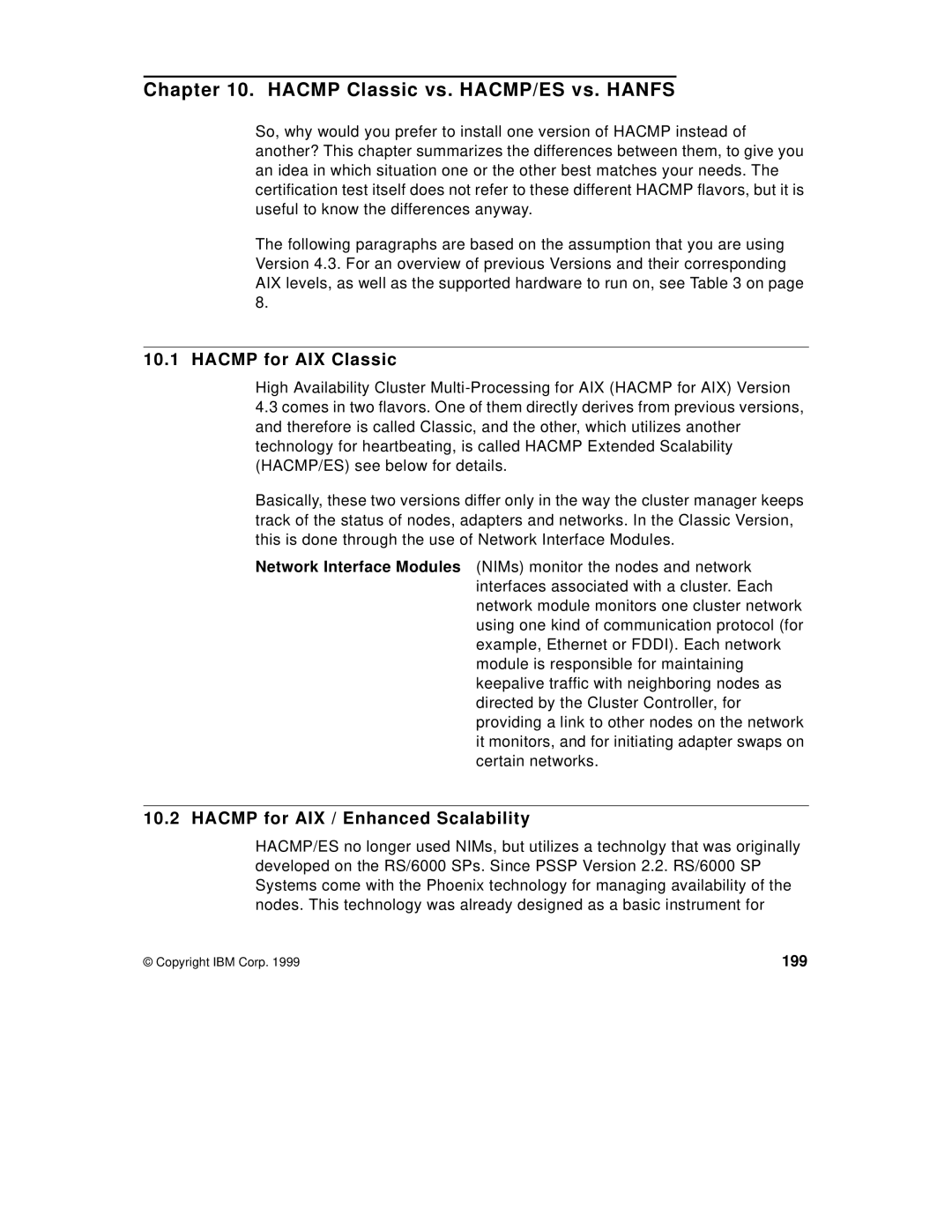
Chapter 10. HACMP Classic vs. HACMP/ES vs. HANFS
So, why would you prefer to install one version of HACMP instead of another? This chapter summarizes the differences between them, to give you an idea in which situation one or the other best matches your needs. The certification test itself does not refer to these different HACMP flavors, but it is useful to know the differences anyway.
The following paragraphs are based on the assumption that you are using Version 4.3. For an overview of previous Versions and their corresponding AIX levels, as well as the supported hardware to run on, see Table 3 on page 8.
10.1 HACMP for AIX Classic
High Availability Cluster
4.3comes in two flavors. One of them directly derives from previous versions, and therefore is called Classic, and the other, which utilizes another technology for heartbeating, is called HACMP Extended Scalability (HACMP/ES) see below for details.
Basically, these two versions differ only in the way the cluster manager keeps track of the status of nodes, adapters and networks. In the Classic Version, this is done through the use of Network Interface Modules.
Network Interface Modules (NIMs) monitor the nodes and network interfaces associated with a cluster. Each network module monitors one cluster network using one kind of communication protocol (for example, Ethernet or FDDI). Each network module is responsible for maintaining keepalive traffic with neighboring nodes as directed by the Cluster Controller, for providing a link to other nodes on the network it monitors, and for initiating adapter swaps on certain networks.
10.2 HACMP for AIX / Enhanced Scalability
HACMP/ES no longer used NIMs, but utilizes a technolgy that was originally developed on the RS/6000 SPs. Since PSSP Version 2.2. RS/6000 SP Systems come with the Phoenix technology for managing availability of the nodes. This technology was already designed as a basic instrument for
© Copyright IBM Corp. 1999 | 199 |
